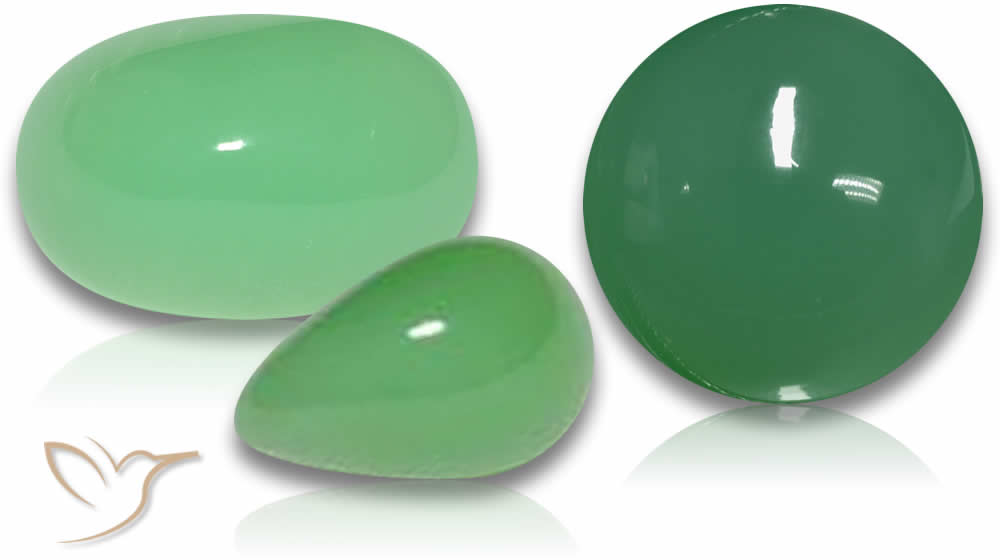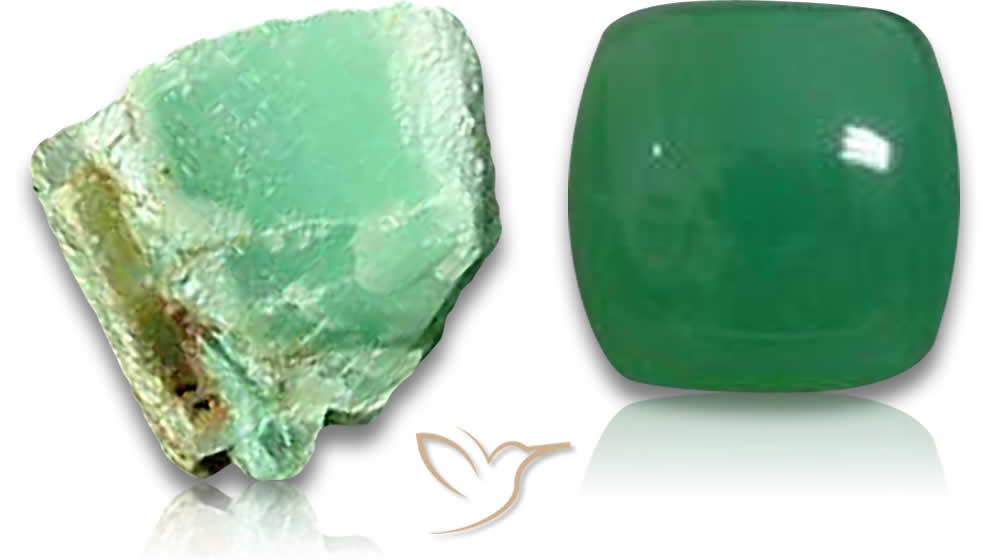Discover Chrysoprase Gemstones: Beauty & Value

Welcome to the world of chrysoprase gemstones. We are excited to introduce you to this unique and beautiful gemstone. Chrysoprase is a vibrant green gemstone that is both rare and valuable. It is often mistaken for jade or emerald, but it has its unique properties that set it apart.
One of the most fascinating aspects of chrysoprase is its natural beauty. It is a translucent gemstone with a range of shades of green that can vary depending on the location of its origin. The beauty of natural chrysoprase is incomparable, and it's something you must experience for yourself.
In this article, we will explore the attraction of chrysoprase gemstones and uncover their potential holistic benefits. We will also guide you on where to purchase unique chrysoprase gemstones that can add aesthetic and healing qualities to your collection.
Key Takeaways:
- Chrysoprase is a rare and valuable gemstone known for its vibrant green color.
- It is commonly mistaken for jade or emerald but has its unique properties.
- Chrysoprase is a translucent gemstone that varies in shade depending on location.
- In this article, we will explore the natural beauty and potential holistic benefits of chrysoprase.
- Stay tuned for our guide on where to purchase unique chrysoprase gemstones.
The Allure of Chrysoprase Gemstones
Chrysoprase gemstones are beloved for their enchanting properties, highlighted by their vibrant green color and numerous meanings.
One of the most noteworthy chrysoprase properties is its ability to promote optimism, joy, and happiness. This positivity is said to arise from the gemstone's strong connection to the heart chakra, which allows individuals to release negative emotions and embrace inner harmony. Additionally, chrysoprase is believed to help in manifesting prosperity and success, supporting growth and achievement in both personal and professional endeavors.
Chrysoprase meaning varies depending on the culture and tradition. The ancient Greeks referred to chrysoprase as "golden-apple stone". Meanwhile, in Australia, where this gemstone was first discovered, it is known as a "new beginning stone" and is associated with the country's pristine natural environment. In modern times, chrysoprase is often called the "stone of Venus," as it is believed to be associated with love, sensuality, and feminine energy.
Unlock the Holistic Benefits of Chrysoprase Gemstones
Chrysoprase gemstones are not only aesthetically pleasing, but they also offer potential holistic benefits. These gemstones are believed to have healing properties that can enhance your overall well-being. Let's dive deeper into the benefits chrysoprase gemstones have to offer.
Chrysoprase healing benefits
The healing properties of chrysoprase gemstones are believed to be linked to its vibrant green color. This color is associated with growth, renewal, and vitality, making it the perfect gemstone for those looking to improve their physical and emotional health.
- Physical benefits: Chrysoprase is said to help with physical healing and support the immune system. It is also believed to aid in detoxifying the liver and kidneys, promoting overall health and vitality.
- Emotional benefits: Chrysoprase is said to promote emotional balance and harmony. It is believed to reduce feelings of anxiety, depression, and stress, promoting a sense of calm and inner peace.
How to use chrysoprase for healing
There are a few different ways you can incorporate chrysoprase gemstones into your healing practice:
- Jewelry: Wearing chrysoprase jewelry, such as bracelets or necklaces, allows the gemstone to be in contact with your skin, promoting its healing properties.
- Mediation: Holding a chrysoprase gemstone during meditation can enhance its calming properties and promote emotional balance.
- Placement: Placing chrysoprase gemstones around your home or workspace can promote a positive atmosphere and help reduce stress and anxiety.
Overall, chrysoprase gemstones offer a unique combination of aesthetic beauty and holistic benefits. Incorporating these gemstones into your collection or healing practice can enhance your physical and emotional well-being.
Shop the Chrysoprase Gemstones Collection
If you are looking to own a piece of the mesmerizing beauty of chrysoprase gemstones, then look no further than our stunning collection. We offer a variety of natural chrysoprase gemstones for sale, each with its unique properties and charm.

Chrysoprase Beads
Add a touch of elegance to your jewelry collection with our chrysoprase beads. These mesmerizing beads crafted with natural chrysoprase are perfect for creating jewelry that catches the eye.
Chrysoprase Cabochons
Our chrysoprase cabochons are perfect for creating statement jewelry pieces that showcase the unique properties of this rare gemstone. Each cabochon is carefully crafted to highlight the stunning green color that chrysoprase is known for.
Shop our chrysoprase gemstones collection today and experience the enchanting beauty and unique properties of this mesmerizing gemstone.
Conclusion
We hope this article has inspired you to explore the world of chrysoprase gemstones and discover their natural beauty, unique properties, and potential holistic benefits. Whether you're a collector or looking for a meaningful gift, chrysoprase gemstones are an excellent choice.
With their vibrant green color and various meanings, chrysoprase gemstones make a beautiful addition to any jewelry collection.
Thank you for joining us on this journey through the captivating world of chrysoprase gemstones. We hope to see you soon in our chrysoprase gemstones collection!
FAQ
What is chrysoprase?
Chrysoprase is a type of gemstone known for its vibrant green color. It belongs to the chalcedony family and is formed from deposits of nickel-rich serpentine.
Is chrysoprase a natural gemstone?
Yes, chrysoprase is a natural gemstone that occurs in nature. It is created through the geological process of mineralization, where dissolved minerals crystallize over time.
What are the properties of chrysoprase?
Chrysoprase is renowned for its beautiful apple-green color, which can vary in intensity. It has a waxy luster and a hardness of 6.5-7 on the Mohs scale. It is also known for its translucency and can exhibit interesting patterns and inclusions.
What does chrysoprase symbolize?
Chrysoprase is believed to symbolize joy, happiness, and abundance. It is thought to promote love, compassion, and optimism, making it a popular choice for those seeking positive energies in their lives.
What are the benefits of chrysoprase?
Chrysoprase is said to have various holistic benefits. It is believed to promote emotional healing, reduce stress, and enhance creativity. It is also thought to aid in physical healing, particularly for conditions related to the heart and respiratory system.
Where can I buy chrysoprase gemstones?
We have a large selection of Chrysoprase gemstones available for sale online.
How should I care for chrysoprase gemstones?
Chrysoprase gemstones should be treated with care to maintain their beauty. They should be cleaned using mild, soapy water and a soft cloth. Avoid exposing them to harsh chemicals or high temperatures, as it can affect their color and quality.

